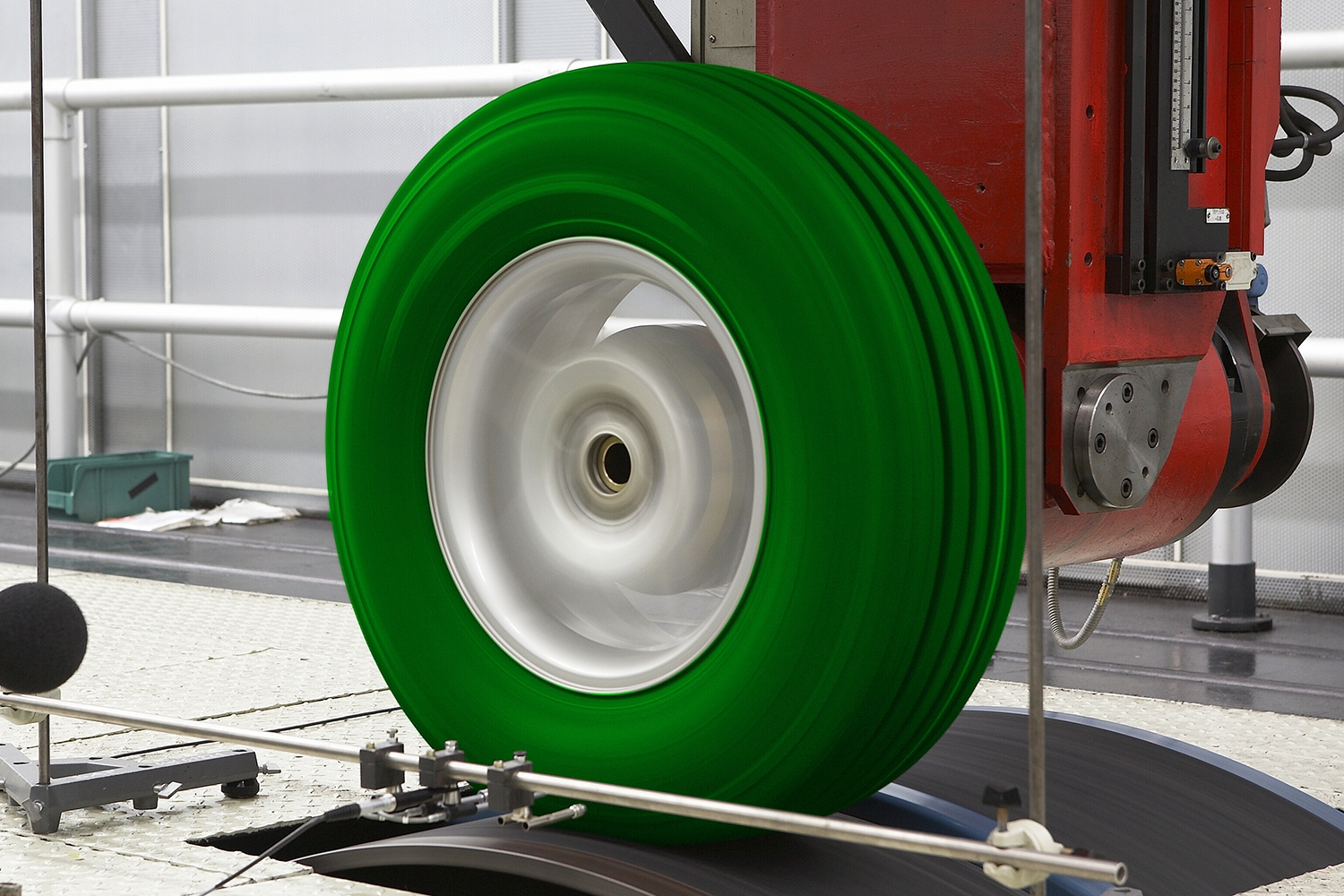
The fuel consumption of trucks is determined by many factors. One of them is selection of the correct tires.
“Green” tires guarantee low fuel consumption. This was the result of a recent study. The correct tire can reduce diesel consumption by up to 8.5 percent. This may help a hauler to save several million € per year. The Lanxess Chemical Group found this after equipping the Talke Chemical Logistics Company with consumption-optimized, i.e. “green,” tires. The test structure was relatively simple. Two identical 40-ton Talke trucks were equipped with new tires. They traveled the route from Hürth, Rhineland, to Loos, France, 30 times with optimized tires. Care was taken that the payload, fuelling processes and driver always stayed the same.
Green Tires, Efficiency Class B
The tires on both test trucks were rated according to Efficiency Class B of the EU Tire Label. This label provides information about different properties of tires, such as the expected fuel consumption. The two test trucks were returned to the repair shop after the first half of the test. The “green” tires went back on the shelf. The optimized tires were replaced with standard tires, Efficiency Class D, and the test continued as before. After a test period of two months, the two trucks had run 25000 miles (40000 km). At this time, the data were evaluated.
2.4 Liters Lower Consumption
Rolling-resistance-optimized tires are economical. This was clearly shown by the test. The test trucks consumed 2.36 liters/100 km less on “green” than on standard tires. This represents savings of 8.5 percent. The reduced diesel consumption had a corresponding, significant effect on CO2 emissions. The two test trucks emitted approx. 1540 lbs. (700 kg) less per 10 000 km. This corresponds to the total weight of a Smart car.
Earn Cash by Changing Tires
It is obvious that lower fuel consumption has an immediate effect on costs. Haulers can save several millions € this way. This is illustrated by a calculated example. A fleet can save 1.5 million € on fuel costs alone when changing from tires of Class D to tires of Class B. This was based on a fleet size of 300 vehicles, a driving distance of 150,000 km and a diesel price of 1.40 € per liter (US$ 7.15 per gallon).
The “green” tires achieve their savings potential mainly due to their low rolling resistance. The rubber mixture is different from that of normal tires. They should nevertheless not score lower in other disciplines of the Tire Label, such as adhesion under wet conditions and noise generation.